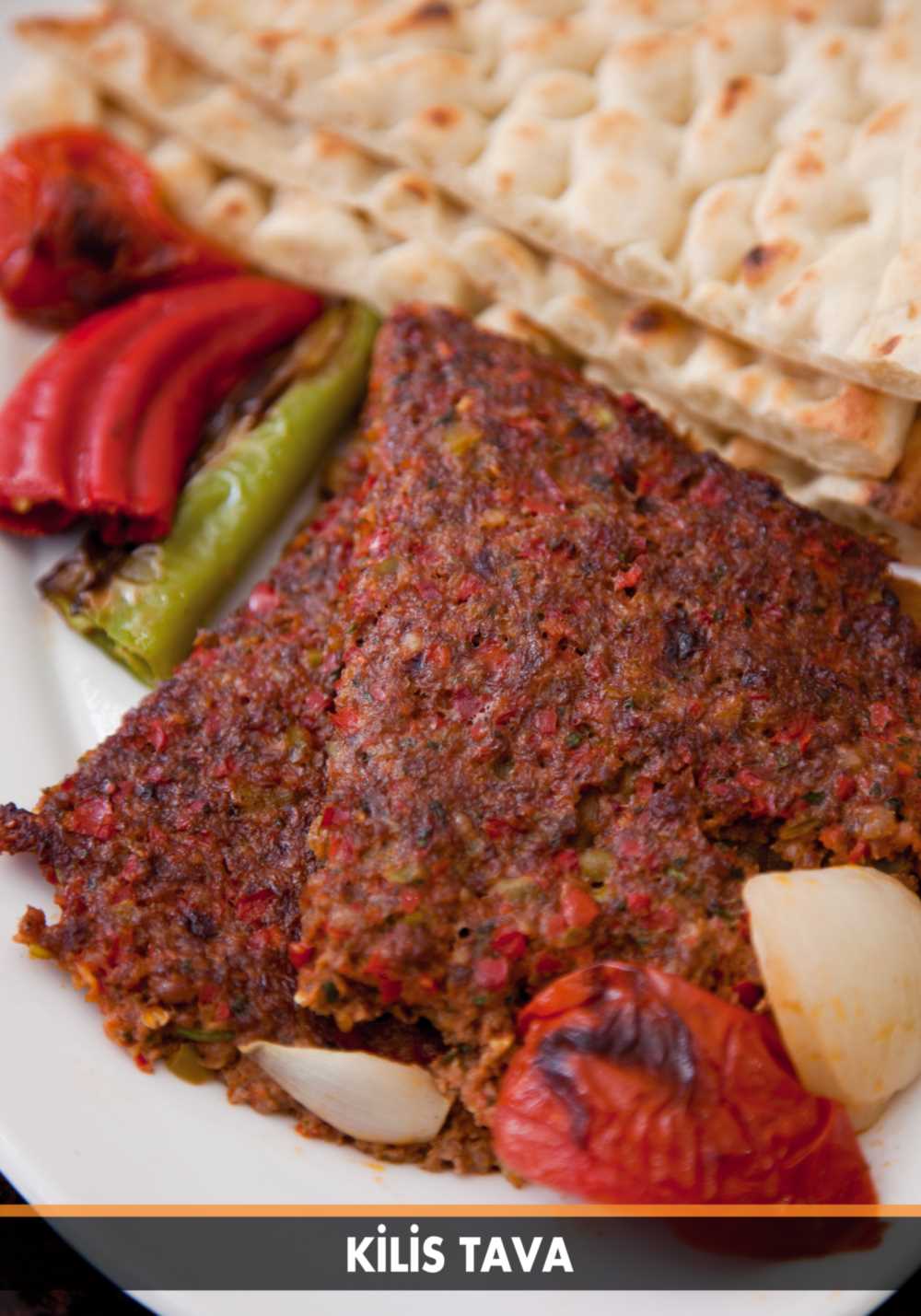Kilis Tava is a traditional oven dish specific to Kilis, a province in Türkiye’s Southeastern Anatolia Region. It is typically cooked in stone ovens using large round trays. Medium-fat ground lamb, finely chopped vegetables, and local spices are mixed together and spread over the tray, which is lined with slices of eggplant or potato depending on the season. The most distinctive feature of this dish is the collaboration between butcher and baker: the ground meat is prepared at the butcher, then taken to the neighborhood oven for baking.

Kilis Tava ( Kültür Portalı )
Preparation
Kilis Tava is usually made with minced meat from the ribs and flank of the lamb. Finely chopped onion, green or red pepper, parsley, salt, and various spices are added. All ingredients are thoroughly mixed and kneaded by hand or with a special cleaver knife (zırh). The prepared mixture is evenly spread over a tray lined with sliced eggplants or potatoes. It is decorated with slices of tomato and pepper on top. Traditionally, it is baked at high heat in a stone oven in a short time.
Seasonal Variations
The bottom layer of Kilis Tava varies according to the season. While purple eggplants are used in the summer, potatoes are preferred in the winter. This change adds both visual variety and different flavor profiles to the dish.
Serving Style
Kilis Tava is typically served hot. It is accompanied by flatbread (tırnaklı pide), ayran (a yogurt-based drink), and seasonal salads. It can be prepared in individual portions or large trays suitable for family gatherings. During Ramadan, it is one of the staple dishes on iftar tables.
Cultural Significance
This dish is not only a culinary delight but also plays an important role in Kilis’ social life. The preparation process involves multiple tradespeople and family members, making it a ritual that strengthens communal bonds. The trays lined up at neighborhood ovens are a concrete example of this cultural cooperation.
Its Place Today
Although Kilis Tava now appears on modern restaurant menus, it is still most authentically prepared in stone ovens using traditional methods. In recent years, it has been registered with a geographical indication, thus contributing to the local economy and gaining attention in the field of gastronomy tourism.


